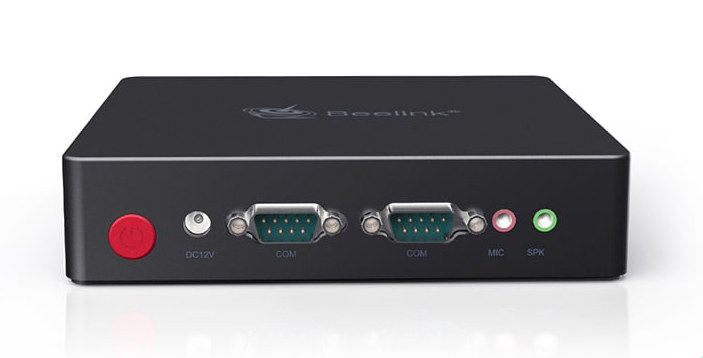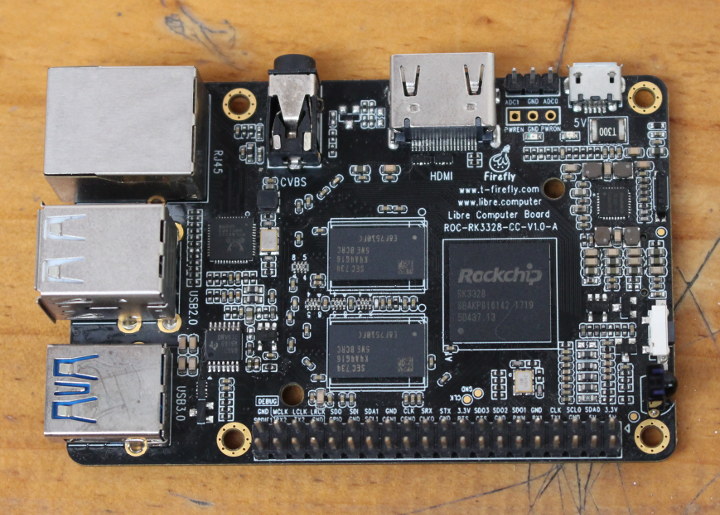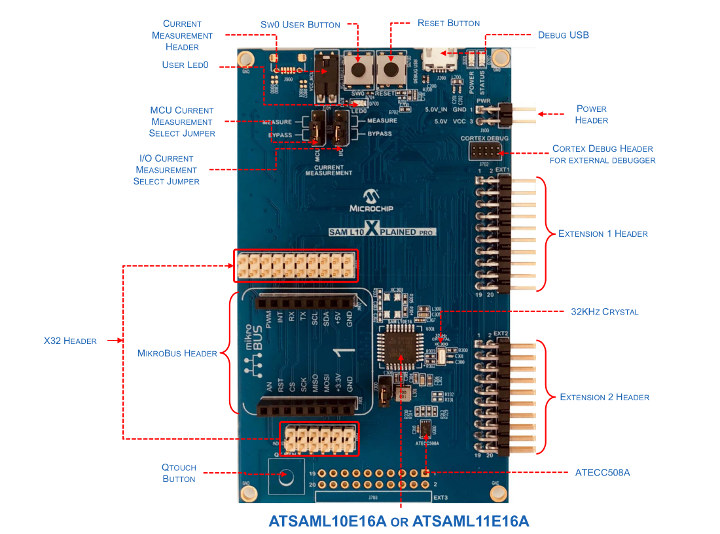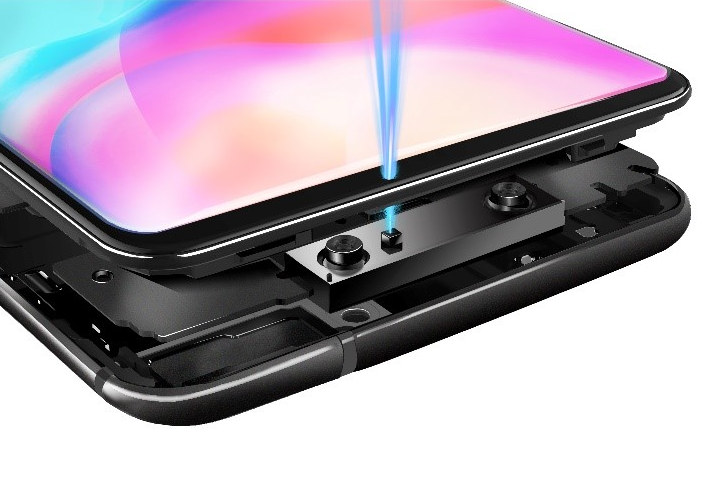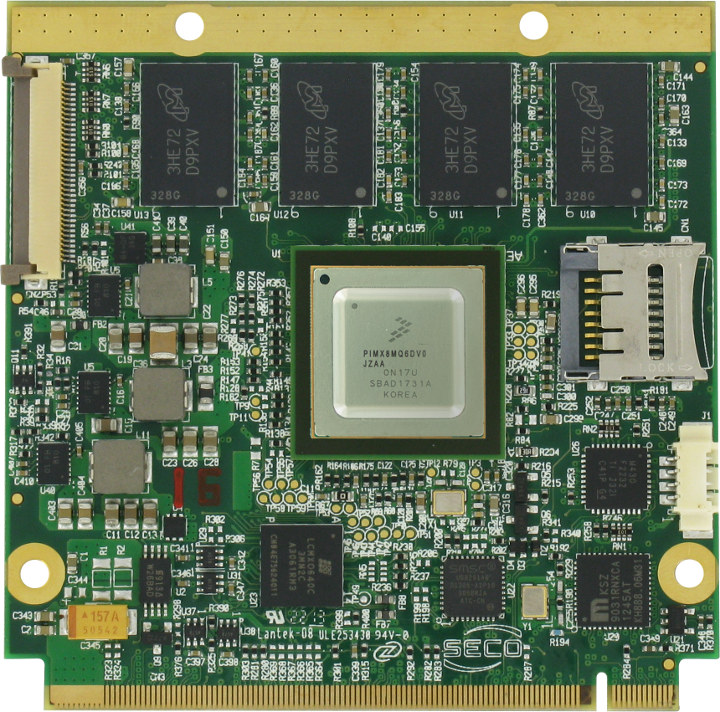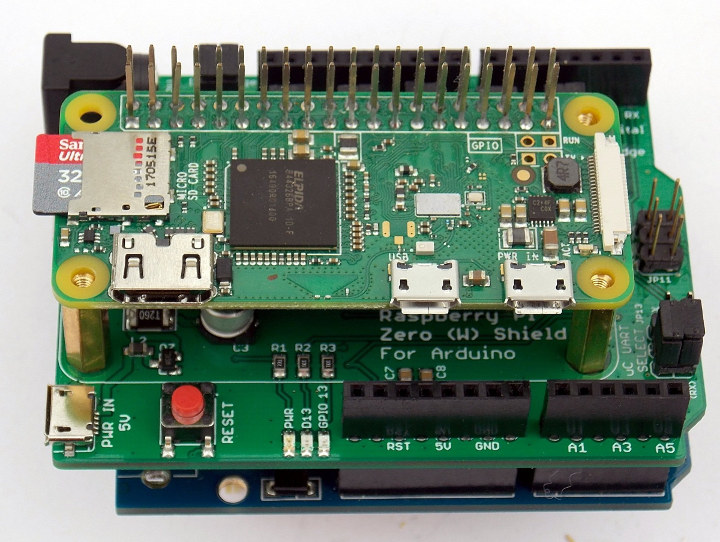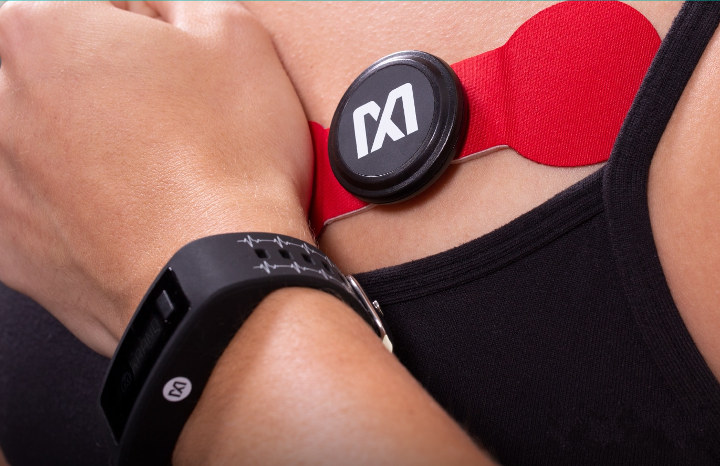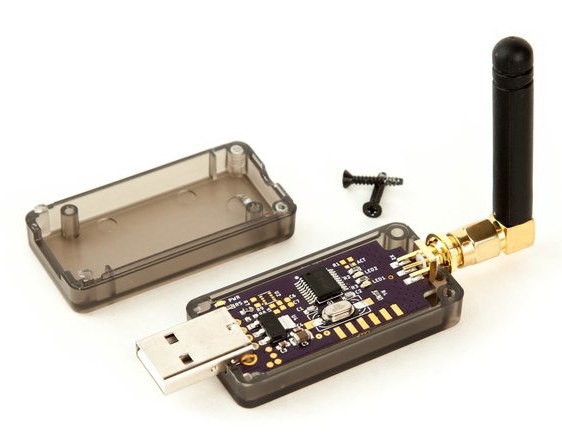Beelink launched several Apollo Lake mini PCs in the last few years, and despite moving to Intel Gemini Lake family for some of their more recent models such as Beelink S2 or Beelink X45, the company has just launched a new Apollo Lake model. The new Beelink KT03 “client computer” is powered by an Intel Celeron J3455 processor, but differs from other mini PCs from the company, as it is sold barebone without RAM nor storage (nor OS), comes with two DB9 RS-232 connectors, and dual Gigabit Ethernet ports. Beelink KT03 specifications: SoC – Intel Celeron J3455 quad core Apollo Lake processor @ 1.5 GHz / 2.3 GHz (Turbo) with 12 EU Intel HD graphics 500 @ 250/750 MHz; 6W TDP System Memory – 1x SODIMM DDR3L socket, no EEC, 1333/1600/1867 MHz; supports up to 8GB RAM Storage – 64Mbit SPI flash for UEFI/BIOS; support for internal 2.5″ SATA drives, […]
Firefly Team Mailbag – Rockchip Development Boards and Accessories
T-Chip Intelligent Technology Co. is a hardware and software technology services company, and a few years ago they setup the “Firefly Team” to provide development boards running Android and/or Linux distributions to the maker community. If I remember correctly the company started with Firefly-RK3288 development board powered, as its name implies, by Rockchip RK3288 processor. Since then they’ve launched several other Rockchip development boards and modules, which I’ve covered on this blog. The company decided to send me some of their recent boards and accessories, so let’s have a look at what I received in my “mailbag”. I’ve also taken a few photos for those who did not watch the video or prefer close up photos. ROC-RK3328-CC “Renegade” Development Board The first board is ROC-RK3328-CC “Renegade” board which was first launched via a crowdfunding campaign by Libre Computer. Both companies have been collaborating on some boards, and Libre Computer makes […]
Microchip Unveils SAM L10 & SAM L11 Arm Cortex-M23 MCU Families with Arm TrustZone for Armv8-M
Microchip has recently announced new SAM L10 and SAM L11 Arm Cortex-M23 MCU families, with the SAM L11 family featuring Arm TrustZone for Armv8-M that provides hardware isolation between certified libraries, IP and application code. SAM L10 & SAM L11 MCU Families Key features: Arm Cortex M23 Core @ 32 MHz Up to 64 KB Flash and 16 KB SRAM picoPower Technology less than 25 μA/MHz in active mode less than 100 nA in sleep mode Fast wakeup time: 1.5 μS Flexible power saving features Enhanced Peripheral Touch Controller (PTC) with improved water tolerance, noise immunity and responsiveness Security (for SAM L11 only) Chip-level tamper resistance Arm TrustZone technology Secure boot Secure bootloader Crypto accelerators Secure key storage Op amp ADC and DAC Package – VQFN32, TQFP32, WLCSP32, VQFN24, SSOP24 Microchip SAM L10 MCU achieved a ULPMark score of 405, or over 200 percent better performance compared to the nearest […]
Vivo Announces TOF 3D Sensing Technology with 300,000 Sensor Points
Earlier this year, I reviewed a TOF sensor board based on STMicro VL52L0X Time-of-Flight ranging sensor that allows to measure distance accurately up to 2 meter using a 940 nm laser and a detection array with a few points to measure the time it takes for the light to travel and determine the distance. VIVO has showcased a smartphone solution leveraging time-of-flight technology at Mobile World Congress Shanghai 2018, but instead of using it for 2D measurements with a small detection array, their TOF 3D Sensing Technology creates 3D scans of objects using a whopping 300,000 sensor points. The technology will enable features & applications such as facial, gesture and motion recognition, 3D photography and extended/augmented reality. Vivo’s TOF 3D Sensing solution is said to deliver 10 times more depth of information than existing Structured Light Technology, for example used for FaceID in the latest iPhones. Vivo’s technology allows 3D […]
SECO Q7-C25 / Q7-C26 QSeven SoMs Feature NXP i.MX 8M / i.MX 8Quad Processor
We’ve previously covered SECO’s SM-C12 SMARC 2.0 i.MX 8M system-on-module, but the company has just unveiled two new module families which are compliant with Qseven – another SoM standard – and powered by NXP i.MX 8M dual/quad core Cortex A53 processor and NXP i.MX 8Quad Cortex A53 or A72/A53 SoC with respectively Q7-C25 and Q7-C26 systems-on-module. SECO Qseven i.MX 8/8M System-on-Module Q7-C25 / Q7-C26 specifications: SoC Q7-C25 (one or the other) NXP i.MX 8M Quad 4x Cortex-A53 cores up to 1.5GHz, 1x Cortex-M4 F real-time core, Vivante GC7000Lite GPU, VPU NXP i.MX 8M Dual 2x Cortex-A53 cores up to 1.5GHz, 1x Cortex-M4 F real-time core, Vivante GC7000Lite GPU, VPU NXP i.MX 8M QuadLite 4x Cortex-A53 cores up to 1.5GHz, , 1x Cortex-M4 F real-time core, Vivante GC7000Lite GPU no VPU Q7-C26 (one or the other) NXP i.MX 8QuadMax 2x Cortex-A72 cores + 4x Cortex-A53 cores + 2x Cortex-M4F cores, 2x Vivante […]
Raspberry Pi Zero (W) Shield for Arduino is an Arduino UNO Baseboard for RPI Zero Board
There are already various Arduino compatible shields for Raspberry Pi where the add-on board connect to a Raspberry Pi 3 board to provide Arduino headers, but Raspberry Pi Zero (W) Shield for Arduino is a little different as it acts as a baseboard with Arduino header for Raspberry Pi Zero (W) RPI Zero (W) shield specifications: Reset switch for the micro-controller LED – Shield power LED, LED connected to Arduino pin 13, LED connected to Raspberry Pi GPIO pin 13 Expansion Female headers allowing for full-access to all Arduino pins. ICSP header access for AVR Micro-controllers Misc 3mm mounting holes for securely mounting Raspberry Pi Zero (W) to shield (mounting hardware included) Solder-jumpers to disconnect Micro-controller SDA/SCL pins from pull-up resistors Solder-jumper to disconnect Raspberry Pi GPIO13 from LED Power Supply – 6.5 to 12V power supply (6.5 to 9V recommended) via 2.1mm power barrel jack, or 5V via micro […]
Maxim Announces Wearable ECG and Heart Monitor Development Kits
Maxim Integrated has recently announced two wearable development kits for fitness / health tracking: MAX-HEALTH-BAND watch for vital signs MAX-ECG-MONITOR with a chest strap for clinical-grade electrocardiograph (ECG) and heart rate. MAX-HEALTH-BAND Development Kit The MAX-HEALTH-BAND wrist-worn heart-rate and activity monitor features the company’s MAX86140 optical pulse-oximeter/heart-rate sensor, MAX20303 wearable power-management solution, and Maxim’s motion-compensated algorithms. The watch sends raw PPG and accelerometer data via Bluetooth to a smartphone app, and also monitors steps, activity, heart rate and interbeat intervals for heart-rate variability measurements. Battery life is around 7 days on a single charge. The kit also includes a USB charging cable, and instructions to download the Android-based application. The evaluation platform can be used for the development of fitness and wellness trackers, health monitoring trackers, or as a experimentation platform for new use cases and algorithms. In addition to raw PPG and accelerometer data, the MAX-HEALTH-BAND monitors steps, activity, […]
LoStik USB Dongle Adds LoRa Connectivity to any Computer or Linux Board (Crowdfunding)
We’ve covered plenty of hardware with LoRa radio from gateways, to Arduino shields, tracker boards, and mini PCIe cards, but after reading an article on Time4EE this morning, I realized we never wrote about any LoRa USB stick. LoStik – previoulsy LoRa Stick – is an open source hardware USB dongle based on Microchip RN2903 / RN2483 LoRa module, and offered on CrowdSupply for $39. LoStik specifications: USB – USB 2.0 port LoRa Connectivity Microchip RN2903 – 915 MHz for US, Canada, South America and Australia Microchip RN2483 – 868 Mhz for Europe Receiver Sensitivity – down to -146 dBm TX Power – adjustable up to +18.5 dBm Range – up to 15 km coverage in suburban and up to 5 km coverage in urban areas Misc – 2x user LEDs Power Consumption – 140 ma typical TX, 20 ma idle (with power LED) Dimensions – 80 mm x 25 […]


